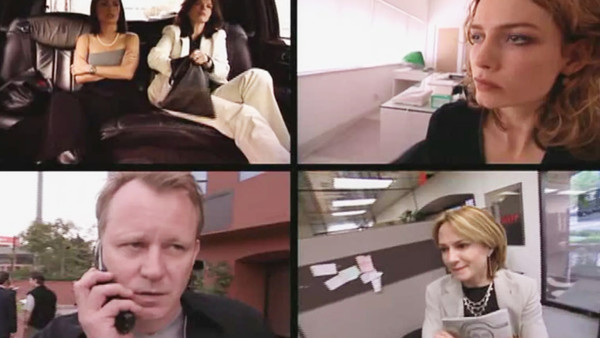10 Movie Innovations That Happened Earlier Than You Think
3. The Single-Take Movie - Timecode (2000)

1917 has received plenty of praise for its admittedly incredible execution of the "movie in a single take" gimmick, even if like most entries into this showy subgenre, it was of course executed by digitally blending shorter takes together in post-production.
There are, however, a small class of films which have actually executed an "honest one-r" - that is, shooting a feature-length movie in a single take for real.
Among the most high-profile examples include Victoria, Lost in London, and especially 2002's magnificent Russian Ark, but two years earlier, director Mike Figgis beat it to the punch with his mind-bogglingly ambitious drama Timecode.
If the single-take movie is a sure madman's escapade, Figgis' experimental concept was nothing short of glue-huffingly insane.
Timecode is comprised of four separate 90-minute continuous shots, each taking up a quarter of the screen, all of which were actually filmed at the same damn time.
Incredibly, the cameras often capture the same scene from a different perspective, and actors may pass from one quadrant to the next, with the camera operators having to ensure that they don't blow the whole thing by accidentally getting another camera in their shot.
It took Figgis and his cast - including the all-star likes of Salma Hayek, Stellan Skarsgård, Jeanne Tripplehorn, Kyle MacLachlan, Saffron Burrows, Holly Hunter, and many more - sixteen attempts to get a usable completed take, and though the film benefited from its loose improvisational style, it's still a massively under-appreciated achievement that preceded its more popular forebears by quite a few years.